Bankruptcy
Considering Bankruptcy?

Here's What You Need to Know
Many Americans find themselves buried in credit card debt, feeling as though they’ve lost control of their finances and contemplating bankruptcy as a solution. Although Bankruptcy is a suitable option for those facing significant hardship, financial experts recommend exploring alternatives to bankruptcy first.
Fortunately, there are alternatives to bankruptcy that can help you regain financial stability. Exploring credit card relief options, such as debt settlement, can be an effective strategy.
If you’ve explored bankruptcy alternatives, and feel like bankruptcy is best for your situation, we’re here to help provide you with the information needed to make a decision.

Key Points for Consideration in Your Decision Process:
- Understanding Bankruptcy: What does it entail?
- Different Bankruptcy Forms: Their functions and differences.
- Eligibility for Bankruptcy: Who should consider it?
- Bankruptcy Alternatives: What other options exist?
- Debt Settlement vs. Bankruptcy: Which is preferable?
- Bankruptcy's Advantages and Drawbacks: What to expect?
- Comprehensive Debt Relief through Bankruptcy: Is it achievable?
- The Effect of Bankruptcy on Credit Ratings: What's the impact?
- Evading Bankruptcy via Debt Settlement Strategies: How does it work?
What is Bankruptcy?
Bankruptcy is a legal process that allows debtors to either repay some of their debts or get them entirely forgiven. While it offers relief from many debts, exceptions include:
- Alimony and child support
- Student loans
- Certain tax debts
- Penalties related to criminal offenses
Bankruptcy is intended for those in dire financial straits, not as a simple escape from debt obligations. It can significantly harm your credit score and restrict your ability to secure favorable loan terms in the future. Exemptions in bankruptcy, determined by state law, often protect primary residences, clothing, and one vehicle, but may require surrendering secondary assets.
Bankruptcy Statistics
Over recent years, millions have pursued personal bankruptcy for debt resolution. As of January 2023, the number of bankruptcy filings in the US increased by 18%. This is due to higher interest rates and stricter lending standards which caused many to become overextended.
Types Of Bankruptcy and How They Work
2 major types of bankruptcy apply to consumer debt
Chapter 7
Typically, with a Chapter 7 filing, it should not take longer than three to four months for your debts to be discharged.
To qualify for Chapter 7 under the provisions of the 2005 BAPCPA, the monthly income of your household needs to be under the state median for households of similar size.
After a Chapter 7 debt discharge, you may not file another Chapter 7 bankruptcy for six years.
Filing triggers an ‘automatic stay,’ halting creditor actions and lawsuits. This bankruptcy type can stay on credit reports for 10 years, while discharged debt records last seven years. Chapter 7 proceedings usually conclude within 3-4 months, subject to income eligibility requirements
Chapter 13
or “personal reorganization bankruptcy” Involves a court-appointed trustee to organize a repayment plan that sets forth with specificity how debtors will settle their debts or pay off in full over three to five years.
Chapter 13 focuses on debt reorganization rather than outright discharge. It stops foreclosure actions and involves a court-approved repayment plan, often seizing all disposable income for debt repayment over 3-5 years. Eligibility criteria include undergoing credit counseling and meeting specific debt thresholds.
Both Chapter 7 and Chapter 13 bankruptcy represent a severe negative impact on your credit for 7-10 years. Even filing bankruptcy for credit card debt can be costly as a typical filing can cost up to $2,500. Filing for bankruptcy for debt could affect your employment status or ability to get hired.
To be eligible for Chapter 13, you’ll need to meet the following requirements.
- You must have regular income.
- You need to undergo credit counseling before filing.
- Your unsecured debt cannot exceed $419,275, and your secured debt cannot exceed $1,257,850.
- You must be current on tax filings.
- You cannot have filed for Chapter 13 bankruptcy in the past two years or Chapter 7 bankruptcy in the past four years.
- You need to submit an income/monthly expense report to the court.
- May hurt your employment status or future employment.
- In a Chapter 13 filing, you may end up paying 75 – 100% of your debt back.
- Chapter 7 is much more difficult to qualify for under the new bankruptcy laws.
- May result in higher interest rates on future loans.
- Carries a negative stigma, mental stress, and other burdens.
Bankruptcy is a “last resort”. - Chapter 13 completion rates average only 32%.
When is Bankruptcy a Viable Option?
Alternatives to Bankruptcy
Over recent years, millions have pursued personal bankruptcy for debt resolution. As of January 2023, the number of bankruptcy filings in the US increased by 18%. This is due to higher interest rates and stricter lending standards which caused many to become overextended.
Debt Settlement vs. Bankruptcy Comparison
While both options don’t require a specific credit score, debt settlement usually involves no upfront fees, potentially halves debt loads, and has a lesser impact on credit scores compared to bankruptcy’s severe, decade-long effect.
Debt Settlement
Bankruptcy
- Credit Score
- No set requirement
- No set requirement
- Qualifications
- At least $10,000 in unsecured debt and regular income
- Must document income and expenses for court. Typically must have no disposable income. Debt usually >50% of your annual income. Income below the median level for your state.
- Upfront Fees
- $0
- $500 to $3,500 - court filing and attorney fees can vary
- Financial Benefits
- Provides short-term relief with a low monthly payment, and long-term relief with avg. term of 24-60 months
- Forgives most unsecured debts, like medical bills, credit card debt, and personal loans.
- Credit Impact
- Significant, but not as bad as bankruptcy, which has the biggest impact to credit
- Severe impact lasting up to10 years
You have options. Let's help you understand them.
Pros and Cons of Bankruptcy
Advantages of Bankruptcy
- The “automatic stay” provision in bankruptcy law means creditors cannot pursue action against you until the bankruptcy is discharged.
- The harassing phone calls from creditors stop.
- Filing bankruptcy provides a second chance to get your debt under control
- Depending on the type of bankruptcy filed, you may not have to repay some or all of your debt.
- A third-party court-appointed trustee will handle communication with your creditors and operate on your behalf.
- You can keep some protected assets in Chapter 7. In Chapter 13, you typically keep assets while repaying debt.
- Chapter 13 could allow you to prevent a foreclosure or auto repossession.
- Filing for bankruptcy impacts your credit score but your score could rebound as you go through the process of settling, especially if you consistently pay your bills after declaring bankruptcy.
Downsides of Bankruptcy
- A bankruptcy discharge could prevent you from getting new lines of credit and may even cause problems when you apply for jobs.
- Depending on the type of bankruptcy filed, you could lose valuable assets, including your car and home
- If federal student loans are the bulk of your debt, filing for bankruptcy won’t help. Only in rare cases is student debt dischargeable through a bankruptcy filing.
- The cost of filing bankruptcy is typically between $1,000-$2,000 if you don’t qualify for legal aid.
- Filing for bankruptcy stays on your credit report for 7-10 years.
- If friends and families have co-signed loans, they could be liable for repaying debt in a bankruptcy filing.
- You could have trouble gaining future credit, or be offered higher interest credit because you filed for bankruptcy.
- Bankruptcies are public information and could haunt you in future transactions or job interviews. While bankruptcy can be a lifeline, it also typically does not address the source of your financial distress.
- Because of the long-term consequences of bankruptcy, some experts say you need at least $15,000 in debt for bankruptcy to be beneficial.
When Should You File Bankruptcy?
Need Help navigating the the various debt relief options?
Speak with a Certified Debt Analyst for a free consultation.
Call Today: (877) 336-7008

